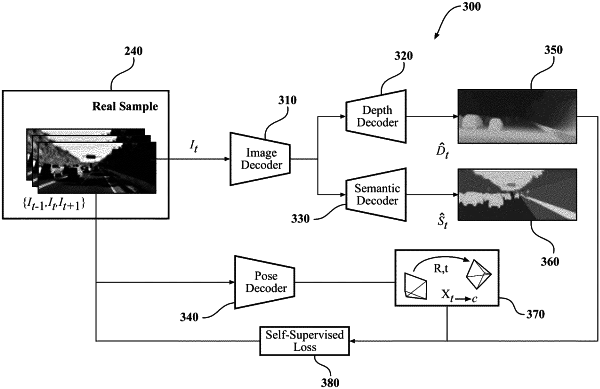| CPC G06F 18/2178 (2023.01) [G06F 18/2148 (2023.01); G06T 7/50 (2017.01); G06T 7/74 (2017.01); G06T 9/002 (2013.01); G06V 20/56 (2022.01); G06V 20/64 (2022.01); G06T 2207/10024 (2013.01); G06T 2207/10028 (2013.01); G06T 2207/20081 (2013.01); G06T 2207/20084 (2013.01)] | 17 Claims |

|
1. A perception system, comprising:
one or more processors; and
a memory communicably coupled to the one or more processors and storing:
a network module including instructions that, when executed by the one or more processors, cause the one or more processors to:
acquire training data that includes real data and virtual data for training a multi-task network that performs at least depth prediction and semantic segmentation, the virtual data including synthetic images;
generate a first output from the multi-task network using the real data and second output from the multi-task network using the virtual data over separate executions of the multi-task network;
generate a mixed loss by analyzing the first output to produce a real loss that includes at least a self-supervised loss and the second output to produce a virtual loss that includes a supervised loss comprised of a semantic loss, a depth loss, a surface normal loss, and a synthesis loss; and
update the multi-task network using the mixed loss.
|